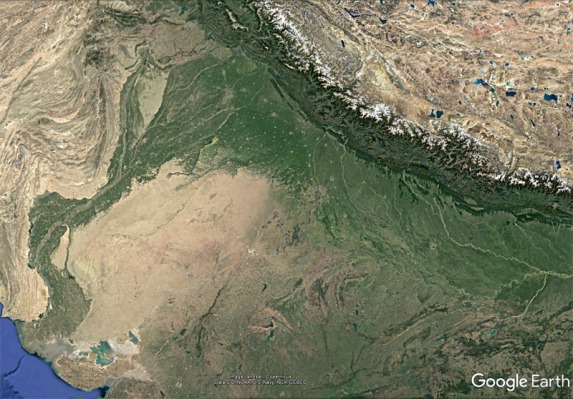
The Proterozoic Eon of the Precambrian is subdivided into the Palaeo-, Meso- and Neoproterozoic Eras that are, respectively, 900, 600 and 450 Ma long. The degree to which geoscientists are sufficiently interested in rocks within such time spans is roughly proportional to the number of publications whose title includes their name. Searching the ISI Web of Knowledge using this parameter yields 2000, 840 and 2700 hits in the last two complete decades, that is 2.2, 1.4 and 6.0 hits per million years, respectively. Clearly there is less interest in the early part of the Proterozoic. Perhaps that is due to there being smaller areas over which they are exposed, or maybe simply because what those rocks show is inherently less interesting than those of the Neoproterozoic. The Neoproterozoic is stuffed with fascinating topics: the appearance of large-bodied life forms; three Snowball Earth episodes; and a great deal of tectonic activity, including the Pan-African orogeny. The time that precedes it isn’t so gripping: it is widely known as the ‘boring billion’ – coined by the late Martin Brazier – from about 1.75 to 0.75 Ga. The Palaeoproterozoic draws attention by encompassing the ‘Great Oxygenation Event’ around 2.4 Ga, the massive deposition of banded iron formations up to 1.8 Ga, its own Snowball Earth, emergence of the eukaryotes and several orogenies. The Mesoproterozoic witnesses one orogeny, the formation of a supercontinent (Rodinia) and even has its own petroleum potential (93 billion barrels in place in Australia’s Beetaloo Basin. So it does have its high points, but not a lot. Although data are more scanty than for the Phanerozoic Eon, during the Mesoproterozoic the Earth’s magnetic field was much steadier than in later times. That suggests that motions in the core were in a ‘steady state’, and possibly in the mantle as well. The latter is borne out by the lower pace of tectonics in the Mesoproterozoic.
For decades geologists have pondered on ‘orogenic cycles’ and whether they are roughly equally spaced in time. The ‘boring billion’ refutes any such regularity. Stephan Sobolev and Michael Brown of the universities of Potsdam in Germany, and Maryland, USA, have investigates an hypothesis that may account for the long-term irregularity in tectonic processes (Sobolev, S.V. & Brown, M. 2019. Surface erosion events controlled the evolution of plate tectonics on Earth. Nature, v. 570, p. 52-57; DOI: 10.1038/s41586-019-1258-4). This stems from a suggestion in the late 1980’s that, once they begin to be subducted, unconsolidated sediments have a lubricating effect. If so, in the long term, the rate of accumulation of sediments at continental margins has a lot to do with the pace of tectonics. And that leads back to the rate of continental erosion. The two authors use a proxy for the global rate of subduction based on the variation over time of the cumulative length of mountain belts that show paired high- and low-pressure zones of metamorphism. They chart variations in continental erosion from its geochemical effects on ocean water, recorded by strontium isotopes in limestones, and by changes in the hafnium and oxygen isotopes of detrital zircons through time. Three time intervals show increases in Sr and O isotope parameters while that for Hf decreases. These indicators of greater continental erosion coincide with evidence for increased tectonic activity around the end of the Archaean Eon (centred on 2.5 Ga), in the early Palaeoproterozoic (2.2 Ga) and the early Neoproterozoic (0.75 Ga). The latter two bracket episodes of global glaciation that would certainly have shifted eroded material towards continental margins. Sobolev and Brown make a case for each representing episodes of increased lubrication. Lying between the last two tectonic paroxysms, the ‘boring billion’ delivered little sediment from the continents so any subduction was frictionally slowed.
I have little doubt that this view will attract comment from EArth-system scientists, not the least because the Earth steadily generates heat as a result of its internal radioactivity, at a rate that declines gradually through time. Plate tectonics is the main means whereby that heat emerges at the surface and radiates to space, thereby balancing heat production. So during the ‘boring billion’, for instance, some process other than the alleged sluggish movement of tectonic plates must have been bringing internal heat energy to the Earth’s surface to dissipate it to space. Another issue is that mountain building elevates Earth’s surface, which provides the gravitational potential to drive products of erosion oceanwards. But it increases frictional resistance.
Related article: Behr, W. 2019. Earth’s evolution explored. Nature, v. 570, p. 38-39; DOI: 10.1038/d41586-019-01711-8

